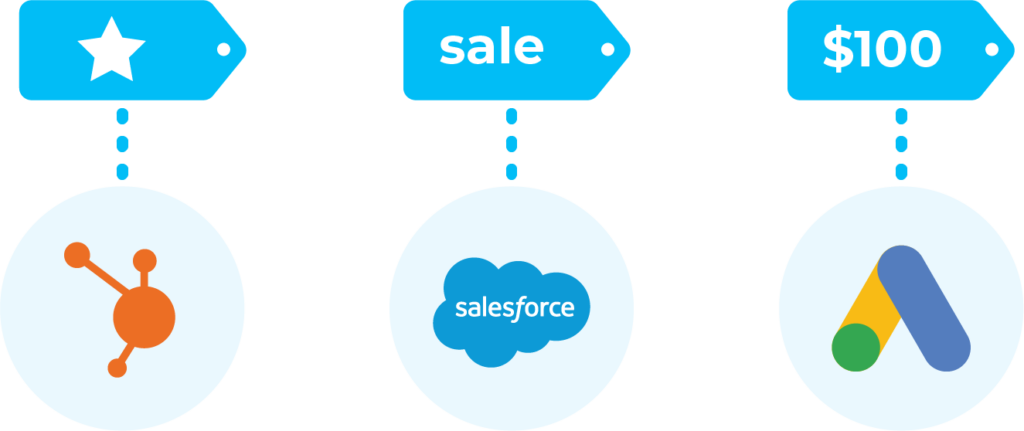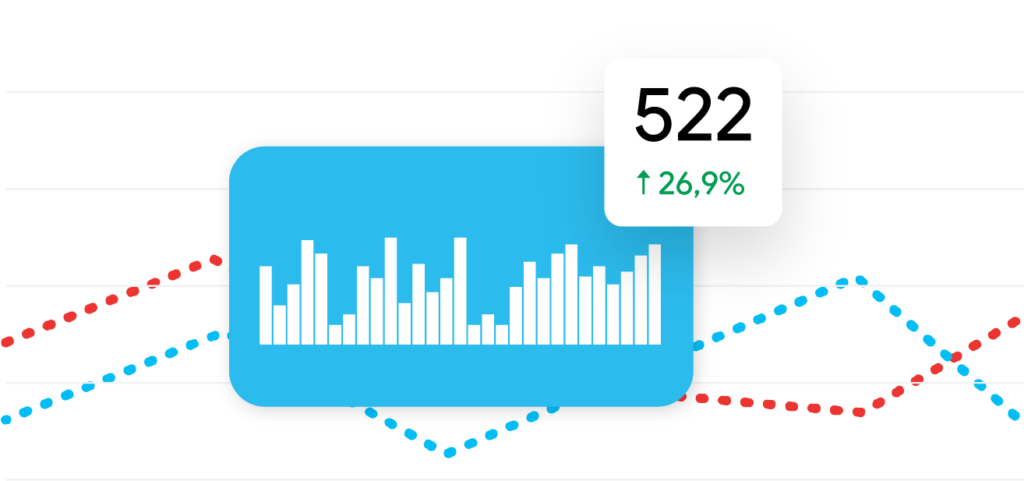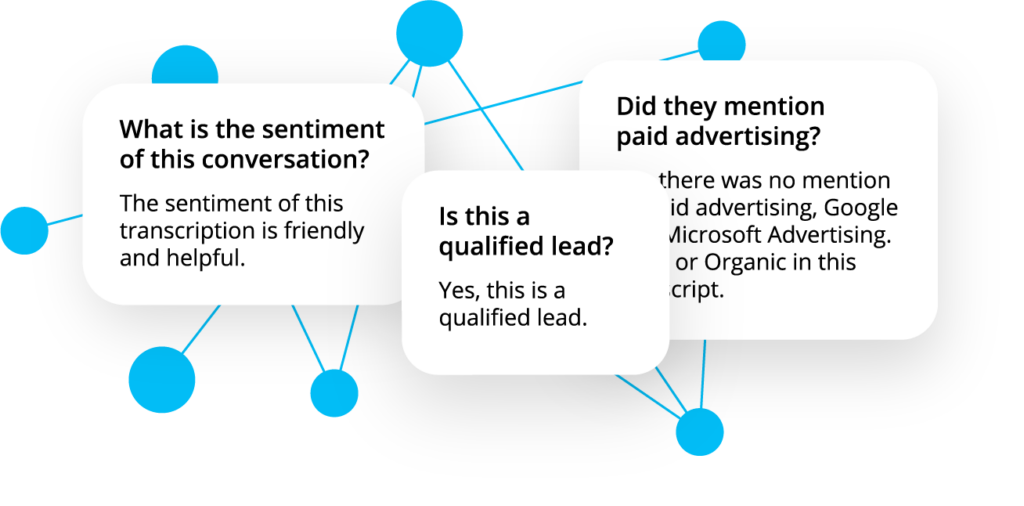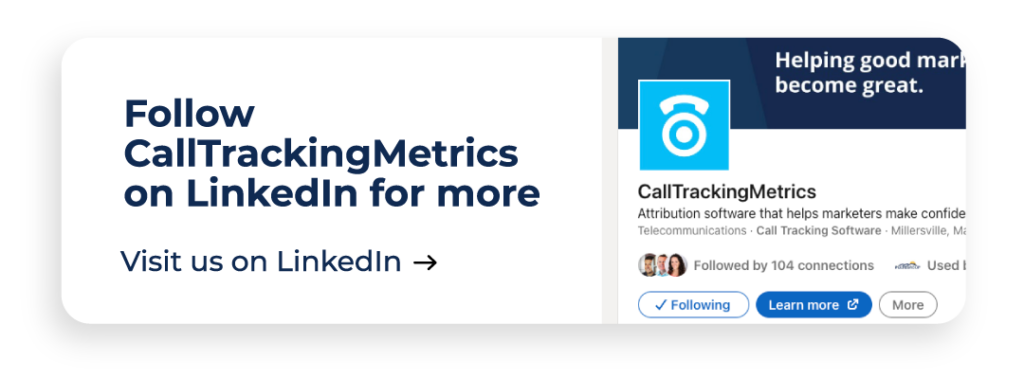Benefits of Marketing Automation: The Ultimate Guide
Read Time: 14 minutes
Table of Contents:
Introduction
Section 1 | What is Marketing Automation (and Why Does it Matter)?
Section 2 | Five Benefits Of Marketing Automation
Section 3 | Terms To Know
Section 4 | Pros And Cons Of Using Marketing Automation
Section 5 | Marketing Automation Use Cases
Section 6 | How To Utilize Marketing Automation
Final Thoughts
Introduction
Marketing automation is a term that people often define differently or associate with different things. What one person considers marketing automation benefits can differ from the next. Some think of marketing automation based solely on its original capabilities, like simple email processes, but others know the nearly endless possibilities of today’s marketing automation technologies.
There are so many ways marketing automation can help organizations. Overall, marketing automation helps organizations do more with less, maximize budgets, and provide exceptional customer experiences. Isn’t it time to explore all marketing automation can do?
This guide breaks down the basics of what marketing automation is, then, takes a deep dive into the benefits of marketing automation with examples, term definitions, and how to get started. Read on to see what the benefits of marketing automation can do for your team, organization, and–bottom line.

What is Marketing Automation (and Why Does it Matter)?
As the term implies, marketing automation has to do with automating marketing tasks. Marketing automation is software or technology that automates numerous marketing and sales tasks. The specific types of tasks that are automated and the extent to which you can automate depend on the software you’re using and the rulesets you input.
From tasks related to managing marketing processes and omnichannel campaigns to lead management and sales follow-ups, the types of tasks performed by marketing automation are numerous–and growing. Getting help with these daily tasks is much welcomed by marketing and sales teams across the globe.
Think about it for a moment, making calls, confirming appointments, sending emails, and building reports are tasks marketing and sales professionals spend time every day executing and many spend a lot of time doing so. What if all of these tasks (and more) were automated and performed for your team?
Marketing automation does just that.
In addition to decreasing wasted time performing tedious, low-level tasks, marketing automation tools like AI-powered virtual agents, powered by artificial intelligence (AI), gives sales and marketing teams more time to focus on higher-level (and higher-value) tasks. This time savings helps to improve efficiency and productivity–and delivers an exceptional customer experience.

5 Benefits of Marketing Automation
The benefits of marketing automation are vast and can support multiple departments in an organization. Teams use marketing automation to streamline tasks, save time, and ultimately do more with less. Often the sales, marketing, and human resource teams as well as contact center professionals are the ones that benefit the most from marketing automation. But the benefits of marketing automation impact the entire organization.
When talking about the benefits of marketing automation it’s important to note that the capabilities depend on the technology and software being used. Some types of marketing automation can support more complex tasks than others. Today’s most advanced types of marketing automation employ artificial intelligence (AI) making it capable of more complex tasks than many realize.
Main Benefits of AI-powered Automation Tools
There are a lot of different tasks you can automate, teams you can support, and ways to better connect with your customers using marketing automation tools. Most marketing automation tools employ AI to one degree or another. With this still-evolving technology, the complexity of the benefits continue to grow. What was advanced in AI yesterday, may well be obsolete tomorrow.
Each of the benefits listed below uses AI. From conversational analytics to virtual agents, AI is an important part of marketing automation tools and the benefits they offer. Here are six ways AI-powered marketing automation tools can help your team thrive.
Marketing automation tools help you to:
1. Maximize Your Marketing Budget
Getting dollars to do more and go further are key components of success. Marketing automation offers numerous ways to help teams do just this.
- Focus ad spend where it matters most. Paid ad spend is one area where marketing automation helps to maximize budgets. Certain marketing automation platforms offer integrations with ad platforms like Google Ads and Bing Ads. With these integrations, data from ad campaigns is seamlessly transferred to dashboards with data from other campaigns. This lets you easily see—in one place—which channels, keywords, and ad campaigns are driving the highest-value conversions. Then you know exactly where to focus ad spend and where to pull back.

- Gain Closed-loop attribution. Call tracking paired with online attribution helps organizations finally get closed-loop attribution and insight into all of their marketing efforts–not just online campaigns. You’ll be able to track offline campaigns to calls, texts, chats, and emails so you get a true picture of all of your marketing efforts.
- Automate time-sensitive tasks. Through tools like transcriptions and keyword spotting, sales can be automatically alerted to leads when they’re hot and you can automatically score activities like calls, chats, and texts to help properly prioritize the next steps. This saves teams time by removing tedious tasks and improves efficiency when they can focus on higher-level items.
2. Create Exceptional Customer Experiences
When your prospects and customers have a good experience with your brand, you create loyal, often raving, fans. Many of the benefits of marketing automation deliver customers a much-improved experience–a win-win for all.
- Improve communication with customers. From instant follow-up texts and calls to making it easier–and faster–to schedule appointments, marketing automation can help your team deliver amazing customer experiences.
- Remove global barriers. Another coveted communication benefit is the barriers it removes for global organizations. From the ability to translate recordings into various languages to using virtual agents to engage with your customers round the clock, every day of the week, marketing automation eliminates many of the common issues for global businesses.
- Automate call and lead management. Marketing automation platforms that automatically route calls can greatly improve the customer experience by providing a faster, more personalized experience. Call and lead management tools like the Smart Router automatically route callers to the agent best suited to their needs–or even the one they spoke with last promoting a great experience for your customers.
- Get key caller details. When automation is paired with call tracking, you get details about your caller before your agents answer the call. From their address and education level to the last place they interacted with your brand and when they last called, agents will have a good idea of how to help the caller before they even answer creating a more personalized experience.
- Maintain brand consistency. Customers report mixed messaging from organizations to be a problem for them. When you implement certain marketing automation tools like IVR menus, chatbots, and virtual agents, you can be sure the customer is getting the same message, in the same tone, across all channels. After all, tools like virtual agents or chatbots only respond according to what you input making it easy to stay brand consistent.
3. Drive Sales Success
Every sales agent knows striking while the iron is hot is vital to success. Marketing automation supports sales teams so they can do just that to beat the competition and provide an exceptional customer experience.
Improve speed to lead time.
The time it takes an organization to respond to a prospect from the second they become an inbound lead is crucial to winning the deal. This time is more important today than ever before but no matter what industry you’re in but for some industries, it can be a make or break.
The home services industry reports that response time is one of the most important factors in making a conversion. For these teams, certain tools like automated text messages, smart dialers, and virtual agents help to meet this need for speed.
In addition, behavioral healthcare professionals need to respond very quickly to their clients–in many cases, it can literally mean life or death. They rely on these same features to provide this life-changing support.
Save time and prioritize more effectively.
Utilizing automated call scoring, lead scoring, and activity scoring with customized rulesets, sales teams know quickly which tasks to prioritize (and can automate some of them!), which agents to assign, when a manager may need to step in, and much more.
4. Spend Less Time Gathering Data and More Time Working with It
Every marketer knows data is their best friend–but that’s the right data, of course. But marketers say they waste a lot of time with analytics and reporting and going from one tool to the next to look at different data sets. Then, putting this disjointed data into easy-to-understand reports takes even more time.
But when teams have that data automatically compiled in visually pleasing, digestible dashboards and reports, they can spend more time optimizing campaigns, strategizing, and connecting with customers.

- Streamline processes, consolidate data. Developers love CTM’s turnkey, no and low-code integrations that make it easy to integrate with your team’s current tech stack. Data is seamlessly transferred from each platform into one, unified dashboard. This results in no more time wasted pulling together data and reports from multiple sources, it can all be automated. And, with the right marketing automation tools, you can create beautiful reports to prove ROI to executives and stakeholders.
- Prove ROI, optimize reporting. Automatic activity scoring shows sales teams which leads are hot and ready to take action and gives marketers visibility into which keywords and campaigns drive the most-valuable results. The scoring is automated based on customized criteria and sent to a dashboard where you can easily assess this information and create reports.
You can take it a step further and determine intent and sentiment with AskAI powered by ChatGPT, from CTM. This tool lets you customize questions to ask after the call so you can determine factors like:
- Was it a successful call?
- What was the tone of the call?
- Is this a good lead?
- Summarize the call in two sentences.
- Did the call result in a conversion?
- So much more
Based on the answers to these questions, you can automatically score calls and even take it a step further. Powered by AI, you can automate follow-up steps like sending a follow-up text message, an appointment reminder, a promo code, and more.

Managers can use this information for coaching opportunities, agents can review highlights of calls to fine-tune and personalize their communications, and marketing can layer on keyword spotting and transcriptions to determine which messages are resonating with customers the most.
5. Sync Data from your Tech Stack Seamlessly
Most marketers and sales professionals have a pretty robust tech stack. Being able to connect these platforms easily and manage all the data in one place is a considerable benefit of some marketing automation platforms like CTM. Automating event and conversion data into platforms like Google Ads & Analytics makes it simple for teams to understand what’s working best and where they need to focus efforts and spend.
Need a little extra support? We got you! Get live help and personalized Q&A with senior engineers during our API office hours every Wednesday
- Transfer Google data simply. Marketers rely on Google Analytics and Ads to get crucial details about their marketing efforts and audience behavior. A seamless connection between these platforms and your tech stack is vital. Platforms offering bi-directional integrations with Google and other popular platforms ensure a smooth transfer of data. CTM’s full integration with GA4 gives teams more flexibility with custom parameters. Automation & syncing multiple Google Accounts
- Integrate with your tech stack hassle-free. No-code, low-code integrations like the 40+ offered at CTM, make it simple and turnkey to integrate. Certain platforms offer open APIs (also referred to as public APIs) which enable developers to more easily integrate with other, more niche types of software. Developers love our open API and developer’s office hours.
According to HubSpot’s 2022 State of Marketing Trends Report, 79% of organizations use marketing automation tools and 91% of marketing automation users report that this is vital to the success of their overall marketing strategy.

Terms to Know
There are numerous terms you’re likely to hear when it comes to marketing automation. Most are related to the specific features and benefits of marketing automation. Some may be terms you’ve heard but others may be new. Either way, it’s good to know these terms if you’re looking into marketing automation and what it can do for your business.
- Activity Scoring – Marketing automation tools can automatically score different types of activity your customers and prospects are engaging in with your business. From emails and chats to phone calls and form fills, scores can automatically be assigned to each of these so teams know which are top priorities.
- Call Management – Call management is the automated system and tools used to get a phone call where it’s supposed to go. The goal of call management is to increase efficiency and speed in getting calls answered and to improve the caller experience by getting calls to the most appropriate party right away.
- Call Routing – Very similar to call management, call routing is the specific path a call takes to connect the caller with the most appropriate party. It can be self-selection in a voice menu, by keypress, or with virtual agents.
- Call Scoring – A call score is a categorization of a phone conversation, to apply a measure of quality or additional context to the phone call. Certain marketing automation tools automatically score calls saving sales team members time. There are multiple ways to score a call, but a rating of 1 to 5 is often the core, as well as marking a call as a converted sale, or not. Additional tagging can be done to further contextualize the call.
- Chatbot – A chatbot provides customers and website visitors with instant support and engagement, however, a chatbot is limited in the level of customer service support it can provide. A chatbot operates with AI and preprogrammed workflows.
- Conversation Analytics – AI-powered tools collect data during conversation and then analyze it according to a set of predetermined rules. Metrics automatically garnered from these conversations provide managers and teams with performance benchmarks to review and analyze. Examples could be talk time, the source of a call, aggregated volume of texts, or chats handled by sales.
- Conversation Intelligence – Conversation intelligence is an advanced feature of conversation analytics. It’s the process of analyzing spoken words, through call recordings and transcriptions, to identify and extract patterns, signals, and actionable insights for marketing and sales teams. This is another process where marketing automation is very helpful.
- Email Automation – Email automation, one of the first t types of marketing automation tools, is a powerful tool that lets you send select emails to specific people at certain times–automatically. Email automation typically is based on workflows and follows the ITTT (if this then that) approach.
- Forms and FormReactor® – The CallTrackingMetrics’ FormReactor helps automatically connect form fills with all your conversions for a full picture of your lead activity. The FormReactor provides attribution for your form submissions and connects you to features to automatically follow up and close leads faster.
- GeoRouting and GeoContact – GeoRouting, or geographic routing, automatically routes calls to the location that is closest or most relevant to a specific caller. This type of call routing works to eliminate the need for placing callers on hold and transferring and is ideal for businesses with multiple locations.
- IVR Menus – A very popular and original form of self-selected call routing is interactive voice response or IVR. It’s a menu a caller hears before a call starts with multiple options to choose from to get their call answered by the right person or team. An example would be “press one for Sales, or press two for Support.”
- Keyword Spotting – Keyword spotting tools provide automated analysis of conversations to identify words or phrases spoken, as they happen, to trigger follow-up actions, categorize and score calls, or alert you when high-priority actions need to be taken.
- Lead Management – Lead management can include any one of a number of marketing automation tools. From automated call routing based on any number of variables you define to instant text follow-ups for form submissions, lead management features help teams to capture and qualify more leads, faster than before.
- Lead Scoring – Marketing automation makes lead scoring easy by automatically assigning a value, usually numeric, to every lead. This way, teams know which leads are the hottest and are ready to take action.
- Omnichannel Communications – Beyond phone calls, customers and prospects connect with businesses through various methods. Omnichannel is a business strategy to give their audience a seamless experience regardless of which channel they choose. Omnichannel encompasses all methods of communication like form submissions, texts, live chats, social media, and calls.
- Social Media Automation – A marketing automation tool used to automatically publish posts and monitor
social site activity.
- Smart Routing – Smart routing is a tool that expedites communications using customizable If/Then conditions to build a sophisticated workflow. When someone calls, they’re automatically routed to the most relevant person or team. It consolidates the routing benefits of IVRs, queues, and other call management features to create a personalized, and automated, path for callers.
- Transcriptions – Transcriptions are the written account of a spoken conversation. Transcriptions can happen in real-time during a conversation or be processed after a conversation has ended.
- VoIP – Voice over Internet Protocol (VoIP) is the method and technology that powers voice communications over the internet. Both desk phones and softphones can be configured to deliver calls through VOIP.
- Virtual Agent – A software program that uses artificial intelligence (AI) and follows scripted rules to provide answers, guidance, and more for customers and prospects. A virtual agent performs routine tasks that are tedious and time-consuming for human agents.

Considering the Pros and Cons
The benefits of marketing automation were mentioned above. These are many of the pros of using this type of software to support sales and marketing teams. Overall, it helps organizations increase productivity and do more, with less.
Both sales and marketing teams get support on tedious and time-consuming tasks like cold calling, text confirmations, and aggregating data from various sources, and building reports, and team members are freed up to work on more important, higher-value tasks that software can’t do. This results in greater ROI, maximized budgets, and increases in revenue.
There aren’t a lot of cons when it comes to marketing automation; the pros tend to far outweigh any cons. However, the numerous benefits of marketing automation software like placing calls, sending texts, and aggregating data into comprehensive reports–are all parts of many marketers’ job descriptions. This makes some people concerned that they will lose their jobs to AI-powered software and consider it a con to using some types of marketing automation.
It’s unclear to what extent this will happen, but there are projections. The World Economic Forum’s Future of Jobs Report said that by 2025, AI will replace nearly 85 million jobs. Clearly, that’s a lot of jobs and reason to worry. However, the same jobs report also stated that this ‘robot revolution’ will also create 97 million jobs.
These new jobs will be good news and what’s great about many marketing automation platforms is that it unites human skills with automated processes creating the best of both–so everyone wins. As AI takes a more prominent role in the workplace, employees and employers should look for opportunities to learn new skills that will help them adapt to this change.

Marketing Automation Use Cases
There are a variety of ways to utilize marketing automation and benefit from it. Just about any industry can benefit from at least one of the common marketing automation use cases. There are some industries that marketing automation and some of its specific features are well suited for today. However, for any organization that wants to improve its conversion rates, engage with customers faster, and drive revenue, using marketing automation is a must.
Take a look at these case studies to see how we’ve helped customers utilizing marketing automation tools:
- Increased Revenue with Text Messaging Automation: Read the Case Study
- 103% increased conversion rates for Window World TX: Read the Case Study
- Better Speed to Lead time with FormReactor®, Keyword Spotting, and Automated Call Routing: Read the Case Study
- 80% Conversion Rate for 10xfive Marketing Agency: Read the Case Study
- Consistently Ensure Privacy and Best Practices with HIPAA/HITECH certification and redaction: Read the Case Study
- 70% increase in calls and leads for Lice Clinics of America: Read the Case Study

How to Utilize Marketing Automation
As you can see, there are many ways you can utilize marketing automation for business success. The specific types of automation you should utilize, in part, depend on your particular organization and goals. Since there are so many different things you can do with marketing automation, it can be overwhelming at first.
It’s best to take a minute to look at and prioritize your goals and objectives before you choose where to begin implementing marketing automation tools. This should be your first step.
Once you know where you want to begin, say for example with attribution, then it’s time to start reviewing the software platforms with capabilities to automate marketing attribution across all channels. Be sure to choose a platform that offers different benefits of marketing automation. This way as your marketing automation savvy evolves, the platform will be able to meet those needs too.
Final Thoughts
Marketing automation makes it possible for teams and organizations to do more with less, maximize their budgets, and consistently deliver exceptional customer experiences. Whether you want to automate email follow-ups or employ virtual agents to provide round-the-clock customer service and support, marketing automation can help. Take time to find the right platform to get started or to expand your efforts.
CTM offers a wealth of marketing automation solutions that are built to scale with you. See for yourself and Book a Demo today.
____________________________________________________________________________
